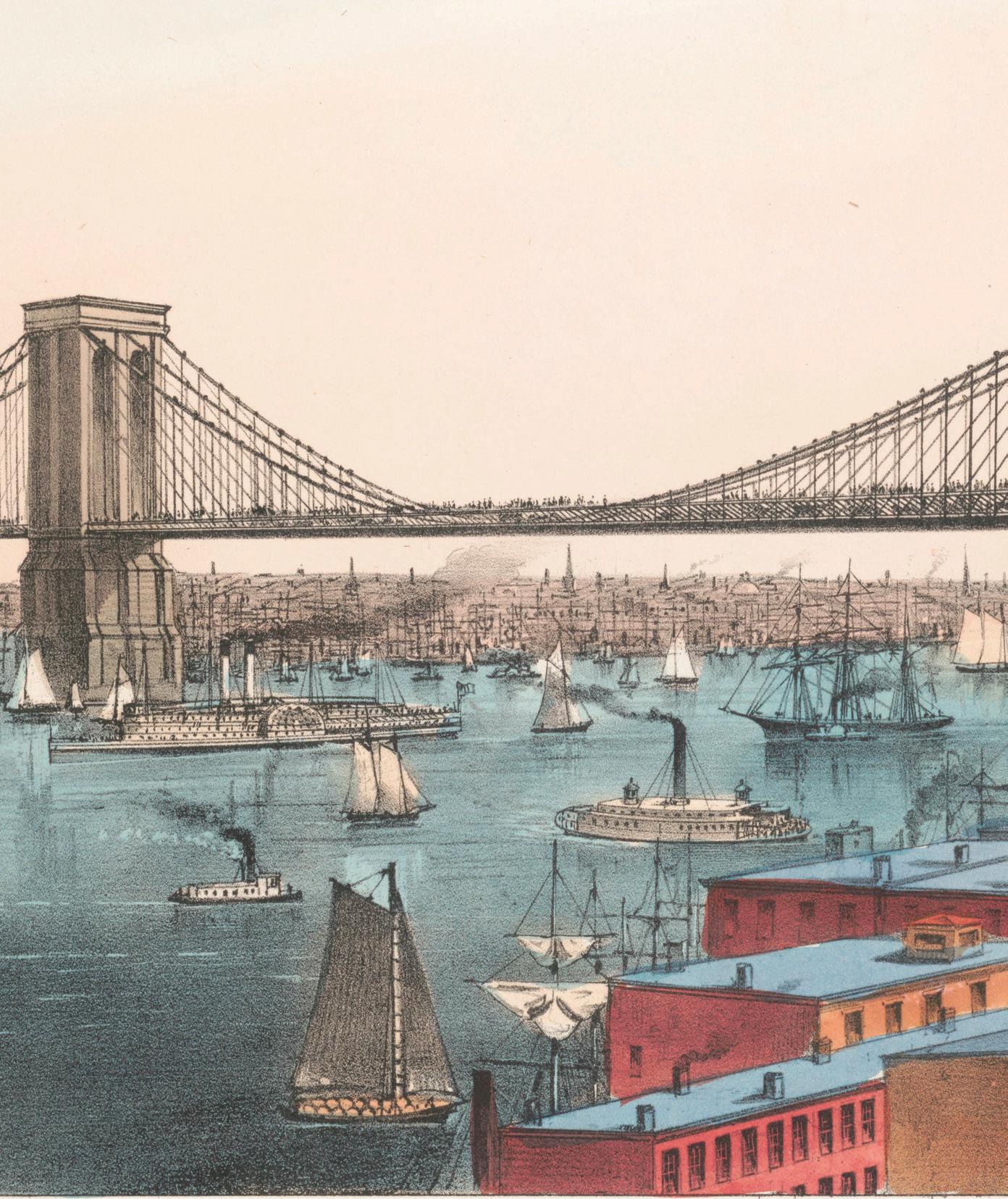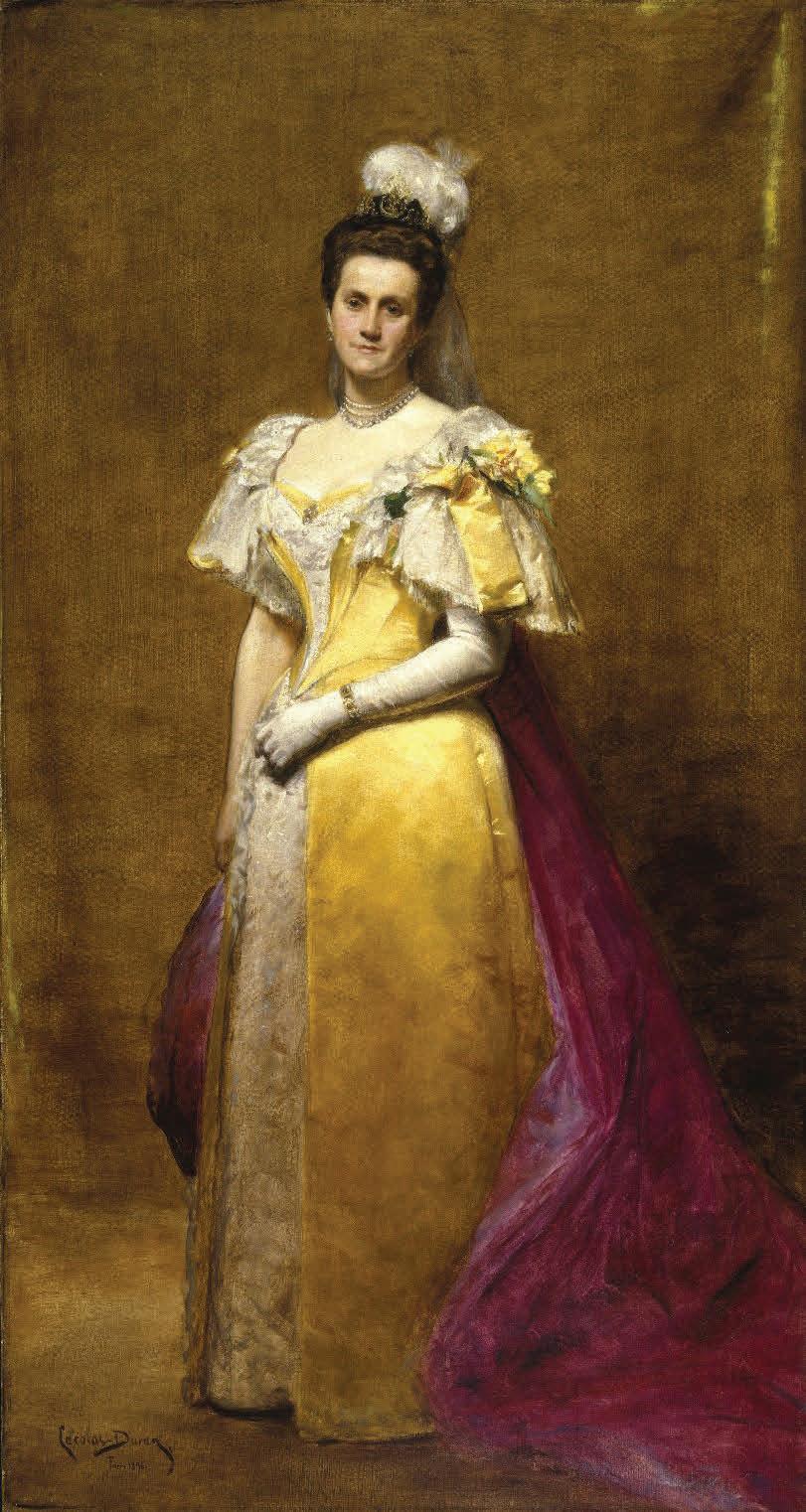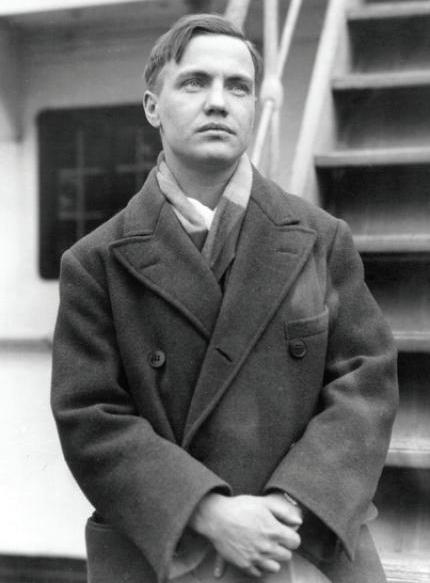
SPRING 2024
Building Bridges
Emily Roebling’s Invaluable Contributions to the Brooklyn Bridge and Women’s Rights

Reserve your EX30 today

Reserve your EX90 today


Emily Roebling’s Invaluable Contributions to the Brooklyn Bridge and Women’s Rights

Reserve your EX30 today

Reserve your EX90 today

Regardless of your age or financial situation, a comprehensive estate plan is essential for all individuals. This guide walks through the key steps to strategic estate planning so you can feel confident that your loved ones are protected, your wishes are respected, and your legacy is preserved.
Estate planning provides peace of mind by confirming that your affairs, including asset management, healthcare preferences, inheritances, and business interests, will be handled according to your wishes. A well-constructed estate plan can ensure that your heirs and beneficiaries receive assets without unnecessary financial burdens while minimizing taxes. It also ensures a guardian is appointed for minor children or dependents to protect their well-being and financial security until they reach adulthood.
The first step in creating an effective estate plan is to take inventory of your assets and liabilities, including bank, investment and retirement accounts, legal property documents, and insurance coverages. Once you have a full picture, your focus can shift from lifestyle to legacy.
Now it is time to decide how, where, and to whom your assets should be distributed. A financial advisor, tax professional, or an estate planning attorney can help evaluate your options. Here are some actionable items to consider:
A will is a legal document that lays out your asset distribution wishes and appoints an executor or personal representative who is responsible for carrying them out. If you have minor children, your will may appoint a guardian who will be responsible for their wellbeing until they reach adulthood. It is important to review and update your will regularly to reflect marital, familial, and other significant life changes, as well any updates to your assets, debt, or end-of-life wishes.
Consider who you would like to designate as your heirs and beneficiaries — the individuals who will inherit your assets after your death. You have the power to specify how much of your assets each individual or entity should receive. Factors to consider include personal relationships and financial needs. Retirement plans and insurance products usually have beneficiary designations that typically outweigh what is stated in a will. Review and make sure the primary and secondary beneficiary designations for your life insurance policies, retirement accounts, and similar accounts are up to date.
This

A revocable trust (also known as a living trust) can be more complex than a will but offers greater control and privacy. With a revocable trust, you have the power to manage your assets, appoint someone to manage them when you are unable or unwilling, and designate how they should be distributed before and after death.
There are three key roles in a revocable trust: the grantor (individual who creates and funds the trust), the trustee (responsible for managing the trust assets according to the trust terms and performing additional administrative tasks), and the beneficiaries (who receive the benefits of the trust). In the event the grantor becomes incapacitated, the trustee can manage the trust assets without legal intervention. Additionally, assets in a revocable trust are outside of probate (unlike in a will), meaning the trust assets can remain private and avoid a lengthy and sometimes costly transfer process.
Directives are legal documents that provide direction for your healthcare and financial decisions in case you become incapacitated. Directives can help ensure that your loved ones are not burdened with making difficult decisions on your behalf and specify actions to be carried out according to your wishes. Estate planning directives can include your preferences for end-of-life care, appointing a guardian, power of attorney, and healthcare power of attorney.
Taxes play a significant role in estate planning, as they can influence the overall value of an estate and the way assets are distributed. It is crucial to have a detailed understanding of federal and state estate tax laws when creating a comprehensive estate plan. These taxes are typically imposed on the cumulative estate value, including assets, property, bank accounts, and other possessions. Discuss with your tax and financial advisors and an estate planning attorney the actions needed to minimize your tax liability.
• Start early. The earlier you start planning, the more time you will have to make informed decisions.
• Seek professional advice. If your estate is complex or you have concerns about specific aspects of your plan, consult with your trusted tax and financial advisors and estate planning attorney.
• Communicate your wishes to your family. For some, consider letting your loved ones know about your estate plan so they can be prepared to carry out your wishes.
• Estate planning is an ongoing process. Review and update your estate plan periodically, including beneficiary designations and appointed individuals, to ensure it accurately reflects your current wishes.
Laura Laszczyk is a Relationship Management Officer in Glenmede’s Princeton office. She can be reached at laura.laszczyk@glenmede.com, or at 609-430-3105.







SPRING 2024





BUILDING BRIDGES
BY WENDY GREENBERGEmily Roebling’s Invaluable Contributions to the Brooklyn Bridge and Women’s Rights 12
MAD ABOUT TULIPS
BY ILENE DUBEHow Their Beguiling Beauty Led to a Financial Crisis in 17th-Century Holland 22
“MODERN DESIGN MEETS ANCIENT PAST”
BY DONALD H. SANBORN III
Rowan University’s Jean & Ric Edelman Fossil Park Museum 32
REACHING FOR THE STARS
BY LAURIE PELLICHERO
Prestigious Performing Arts Summer Programs 42




BOOK SCENE
BY STUART MITCHNER
A Child’s Garden of Science Books: Einstein, Pi Day, and the Brooklyn Bridge 50
THE WHIMSICAL WORLD OF FANCY CHICKENS
BY TAYLOR SMITH56
THE “BAD BOY OF MUSIC”
BY ANNE LEVIN
Trenton Native George Antheil 64
Q&A WITH SAM WANG
INTERVIEW BY LYNN ADAMS SMITH
Professor of Neuroscience at Princeton University and Director of the Princeton Gerrymandering Project and the Electoral Innovation Lab 72
A WELL-DESIGNED LIFE BY LYNN ADAMS SMITH 78, 80
ON THE COVER: Chromolithograph of the “Great East River Suspension Bridge” by Currier and Ives, created in 1883. (Wikipedia)














Anne
Ilene
Wendy
Stuart
Donald
Taylor
William
Joann
Tracey




Welcome to your Spring issue of Princeton Magazine.
Experience Princeton, the new nonprofit group that is promoting Princeton and its merchants as a visitors’ destination, has “Bloom Local” as the theme for this season, and its logo is marked by some flowers. The same could be said for this issue of Princeton Magazine, for you will find that our writers have uncovered a wonderful array of new things to do and know about from our wonderful location in the middle of the Garden State. The other aspect of these discoveries is the uncovering of some unknown heroes and heroines related to each.
Since we see spring as being marked by new blooms, you will enjoy Ilene Dube’s story “Mad About Tulips,” which takes you all the way back to 1554 when tulips were introduced to Europe by the emperor to the sultan of Turkey, who sent the first bulbs to Vienna. It turns out that tulips have no scent, no taste, and the most beautiful ones are that way because of diseases, yet for centuries the tulip was a marker for wealth and today it is a critical component in the economy of the Netherlands.
Speaking of unknown heroes, I’ll bet you never heard of George Antheil from Trenton. He went through the Trenton school system but never completed high school, and went off to Paris in early 1920, where he happened to rent an apartment above the bookstore of Sylvia Beach. It was there that he became part of the art and intellectual momentum of the period.
Antheil was a very versatile musician, producing some 300 musical compositions, but his most radical composition, Ballet Mecanique, broke all the rules with its sirens, bells, player pianos, and even airplane propellors! When it was played, riots actually broke out in the audience. On April 20, the Trenton-based Capital Philharmonic of New Jersey will perform Ballet Mecanique at the Roebling Machine Shop. Read Anne Levin’s fascinating story, and I hope to see you at the concert.
Meet Sam Wang, another unsung hero that we discovered, who was interviewed by Editor-in-Chief Lynn Adams Smith. Sam is a professor of neuroscience at Princeton, as well as the director of the Princeton Gerrymandering Project and the Electoral Innovation Lab.
Sam points out that gerrymandering has been with us for over 200 years but has worsened in the last few decades. You can only imagine how bad it is today! Wang identifies himself as a “criminal investigator” who can identify means, motive, and opportunity. He describes the human brain as one of the most complex systems we know of, and he uses the same computational tools used in neuroscience to study the product of many brains: political outcomes.
I also have to put fancy chickens in the category of unsung heroes. According to Taylor Smith, they can be wonderful pets for children and come in a host of varieties with each having not only a different look, but also a different personality. Just looking at the photos will bring a smile to your face.

Note in the above paragraph the names Trenton and Roebling, and you are probably aware of that connection because, in its industrial heyday, Trenton was home to the John A. Roebling’s Sons Company and, of course, you know that its most famous work was the Brooklyn Bridge.
In fact, as one of my personal development projects, I bought the Roebling Estate in Lawrence Township, known as Land Fall. In the living room, there was a fireplace so big that I could almost walk into it. The mantel piece was a slab of limestone and into it was carved an image of the Brooklyn Bridge.
The bridge had been designed by John A. Roebling as “the Eighth Wonder of the World,” but he died early, and it fell to his son Washington to get it built. The unsung heroine of that bridge was Washington’s wife, Emily, who oversaw the construction of the bridge when he became ill.
Wendy Greenberg’s story goes on to tell how Emily Warren Roebling later became a leader in the women’s rights movement. Princeton’s favorite historian, Clifford W. Zink, who wrote The Roebling Legacy, described Emily as a very accomplished woman in her time, but her standing has increased in the last 15 years.
Perhaps the most dramatic discovery in putting this issue of your magazine together was that there is a huge fossil park in Mantua Township, 25 miles inland from the ocean. Through the generosity of Jean and Ric Edelman, Rowan University will open their Fossil Park Museum this summer. The Edelmans are the unsung heroes of what Kenneth Lacovara, Ph.D., its founding director, describes as “not like any other place in the world.”
The new 44,000-square-foot museum itself is a stunning piece of architecture created by the New York firm Ennead. As an architect, I was absolutely enthralled by its design. But an even more amazing piece is the adjoining fossil park where, notes writer Donald H. Sanborn III, visitors can dig for fossils and take them home. The unlimited supply of 66-million-year-old marine and terrestrial fossils record the very last moments of the dinosaur world.
Along with all of our interesting stories, you will find that Stuart Mitchner has assembled an awesome collection of children’s books about science, and Laurie Pellichero has gathered an array of prestigious summer programs for students with an affinity for the performing arts which, as parents or grandparents, you might want to consider as a special camp experience.
Lynn Adams Smith’s “A Well-Designed Life” is a special feature each issue. This month’s images are aimed at summer living — hold on to your wallet while viewing.
Lynn and I hope that you enjoy this issue as much as we enjoyed putting it together for you. We also want you to note the wonderful graphics that accompany each story created by our Art Director, Jeff Tryon.
Enjoy the spring as it comes into bloom.
Respectfully yours,
 J.Robert Hillier, Lh.D., FAIA Publisher
J.Robert Hillier, Lh.D., FAIA Publisher






Abronze statue of John A. Roebling in an armchair, with a diagram of a suspension bridge on his lap and books and blueprints beneath his chair, sits in the Cadwalader Heights neighborhood of Trenton. On one side, a relief panel depicts the Brooklyn Bridge — his masterpiece, referred to as the Eighth Wonder of the World.
But the story of the Brooklyn Bridge, with its iconic suspension cables and arches, its design inspired by a church in Germany, is not one man’s work. In fact, its story also involves a woman: Emily Warren Roebling, the wife of Roebling’s son Washington.
Even before viewers of HBO’s The Gilded Age series saw Emily Roebling depicted this past season, she was the subject of many books and articles heralding her role in the building of the Brooklyn Bridge. In the HBO series, a young architect and heir to a railroad fortune is surprised to learn that she worked behind the scenes during bridge construction, and he toasts her during a bridge opening celebration. Another male character had earlier warned that her involvement must be kept a secret because if it were revealed “that the Brooklyn Bridge was largely the work of a woman, it would make men afraid to cross it.”

Trenton Roeblings, for the most part, is about the men and their company, John A. Roebling’s Sons, makers of steel and wire rope, Emily is the subject of several children’s books emphasizing STEM (science, technology, engineering, and math). David McCullough’s book Great Bridge: The Epic Story of the Building of the Brooklyn Bridge includes a chapter titled “Emily,” and she is the subject of Silent Builder : Emily Warren Roebling and The Brooklyn Bridge by Marilyn Weigold. She is noted in The Roebling Legacy, by Princeton historian Clifford W. Zink, and in The Brooklyn Bridge: A Cultural History by Richard Haw. Emily Roebling is also the subject of the historically based novel The Engineer’s Wife by Tracey Emerson Wood.
There is no question she was involved in the building of the Brooklyn Bridge, but sources differ on the magnitude of her role. A plaque on the bridge honors Emily Warren Roebling, “whose faith and courage helped her stricken husband, Col. Washington A. Roebling, C.E. (1837-1936) complete the construction of this bridge from the plans of his father John A. Roebling, C.E. (1805-1869), who gave his life to the bridge.” The plaque also says, “Back of every great work we can find ‘the selfsacrificing devotion of a woman.’”
Thousands of cars, bicycles, and pedestrians now cross it every day, and Emily’s indispensable role is better known, although it has been both overlooked and occasionally aggrandized in the past. Although the history of the
Zink considered why Emily Roebling is more appreciated now. “She was a very accomplished woman in her time, in areas where women rarely had any roles. People have known a little about her, but her visibility in the last 15 years, and relevance, has grown,” said Zink, who also wrote Spanning the Industrial Age: The John A. Roebling’s Sons Company, Trenton, N.J. 1848-1974 , among other books, most recently The Princeton Eating Clubs.

Emily Warren was born in 1843 in Cold Spring, N.Y., to a middle-class family, the second youngest of 12 children. She attended a private secondary boarding school, enrolling in 1858 at Georgetown Visitation Convent in Washington, D.C., where she studied geometry, history, astronomy, and algebra — subjects not typical for women of that day.
“Being the second to last of 12 children, she must have gotten vast amounts of attention. Her brother was a strong figure in her life, and I think all that contributed to her self-confidence,” said Zink.
It was unusual for her to attend Georgetown, now Georgetown Visitation Preparatory School, Zink noted. “There were very few women who went to that school on that level, and it was a big boost for her in knowledge, social interactions, and poise.”
While visiting her brother Gouverneur, who was serving as the commander of the
Fifth Army Corps., she met Col. Washington Roebling, whom she married in 1865. Letters between Emily and Washington, many of which are in the Rutgers University Library Special Collections and cited in books about her, show mutual admiration.
In 1867, John Augustus Roebling embarked on building a 1.1-mile bridge across the East River between Brooklyn and Manhattan, which, at its opening, would be the longest suspension bridge in the world. But a series of misfortunes occurred. Construction was planned for 1869, however, after a ferry crashed into Roebling’s foot, some of his toes had to be amputated and he died of tetanus in July of that year. His son Washington, at age 32, was to fill his father’s role, but he became incapacitated by decompression sickness, which came from working in caissons — the watertight retaining structures needed to work under the river. Decompression sickness can involve partial paralysis and loss of senses. The McCullough book states that Washington was “in constant torment, his work a nightmare instead of the inspiration and source of pride it had been for them both.”
Richard Haw, a professor of interdisciplinary studies at City University of New York, who wrote several books about the Roeblings, summed up the situation in an interview: “Two Roeblings down two years in. Washington is the only person who can pull off the bridge. In the Roebling family, between them, no one was better at building suspension bridges and having them stay up.”
Emily Roebling then sprang into action. She was her husband’s emissary
with contractors, officials, and engineers. Those writing about Emily credit her quick intellect, her charm, and her ability to pivot to whatever was required.
“The story of building the bridge is irresistible,” said Haw. “People love it, they keep writing about it.” The idea that she was the “secret engineer” is not true, he said, “but it is inspiring, and she was very important in Washington Roebling’s life.”
In the New York Times series “Overlooked,” belated obituaries of underappreciated persons, Jessica Bennett wrote of Emily Roebling, “It was not customary for a woman to accompany a man to a construction site in the late 19th century.” When her husband became ill, said the 2018 writeup, “she went back and forth to the construction site. She negotiated the supply materials, oversaw the contracts, and acted as liaison to the board of trustees.”
“I don’t think that the Brooklyn Bridge would be standing were it not for her,” said Erica Wagner, as quoted in “A Mighty Girl,” a collection of materials about accomplished females. “She was absolutely integral to its construction.” Wagner is the author of Chief Engineer: Washington Roebling, the Man Who Built the Brooklyn Bridge. ”





“The chief engineer was off the scene,” said Haw. “But you had a mastermind in a house in Brooklyn Heights. Emily was a go-between. She passed messages, and learned to speak to the engineers.” He noted that Washington needed an interlocuter, and as changes were made in the construction process, Emily was a trusted aide-de-camp.
Emily’s most significant contribution, Haw said, was that “when the board of trustees occasionally got the idea to fire him, Emily ran interference. Emily was good at politics. She did a lot of politicking. Through her machinations he was able to stay on through the battles to stay as chief engineer — a final attempt to remove him would mean he would not be the engineer of record. She kept the bridge project on track.”
The limestone, granite, and cement bridge of nearly 6,000 feet opened for traffic May 24, 1883. It is well known that Emily Roebling rode with President Chester Arthur across the bridge. The New York Times published a sidebar story with the headline: “How the Wife of the Brooklyn Bridge Engineer Has Assisted Her Husband.” The New York Times article (published on May 23, 1883, and datelined Trenton, N.J., May 22), states: “While so much has been written about the Brooklyn Bridge and those who have had a share either in planning or building it, there remains one whose services have not been publicly acknowledged.” The article stated that Emily Roebling had “applied herself to the study of engineering,” and says she was able to “assume the duties of chief engineer.”
Another New York Times article, published on September 25, 1983, and headlined “A Roebling is getting her due,” summed it up this way: “Were it not for the determination of Emily Warren Roebling, the Brooklyn Bridge might not have been built according to its chief engineer’s master plan.”
Emily’s visibility has increased, but some of the myths around her have also grown, Zink noted. For example, she did not replace Washington Roebling as chief engineer. “She was his assistant and liaison and was knowledgeable about engineering to ask questions and answer,” he said. To her credit, Zink said, she learned quickly and could competently discuss the engineering issues.
When the bridge was completed, Emily turned her attention to advocating for women’s rights and speaking publicly for equity in marriage. The Roeblings moved to Trenton, where the Roebling wire rope company business was located. Their mansion on the banks of the Delaware River on West State Street, near Washington’s brothers’ homes, is now the site of the New Jersey State Library.
Zink noted that Emily and Washington’s grandson Siegfried had offered the house as a governor’s mansion in 1929, but Gov. Harry Moore turned it down. It was demolished in 1946.
“Emily built the grandest house that was ever built in Trenton, and it’s terrible that the state tore it down,” said Zink. The house of Ferdinand. Washington’s brother, remains on West State Street, and is now the office of the New Jersey League of Municipalities.
Emily flourished in Trenton society and was active in women’s clubs, including the International Council of Women and Daughters of the American Revolution. She also had a board
appointment in Princeton at the Evelyn College for Women, open from 1887 to 1897. She lectured at clubs and organized a camp on Long Island for cavalrymen coming home from the Spanish American War. But her letters often referred to a need to escape Trenton and she did, meeting Queen Victoria and traveling to attend the coronation of Czar Nicholas II in Moscow in 1896.
In 1899, at age 56, she enrolled in New York University’s Woman’s Law Class, which issued a university certificate. At the graduation, she read her award-winning essay, “A Wife’s Disabilities,” which garnered publicity in the Trenton newspaper and beyond.
Emily died at home on February 28, 1903, it is said, of stomach cancer. She is buried not in Riverview Cemetery in Trenton or the First Presbyterian Church of Ewing, where other family members’ gravesites are located, but in Cold Spring, N.Y., where she was born, and Washington followed in 1926. (Washington remarried in 1908; his second wife is buried in her native South Carolina.)
When she died The Brooklyn Daily

Eagle published a long obituary and photo. The obituary credited her with “superintending the detail work connected with the bridge,” but called her “one of the best-known club women in the country” and noted her “prominence among the women of the country in all movements which looked toward the so-called emancipation of the sex.”
On May 29, 2018, a block of Columbia Heights between Pineapple Street and Orange Street in Brooklyn was officially renamed Emily Warren Roebling Way. (She lived on the block with her husband from 1869 to 1883.) New York City Councilmember Stephen Levin co-sponsored the renaming and posted it on social media, saying that “the legacy of Emily Roebling endures as an example of perseverance, aspiration, and dedication to fighting for equality.”
Of her life, Zink said, “My impression is that she was a very strong women, with a strong sense of self confidence. She took on challenges unusual for a woman of her time and achieved success with her own personal style.”
Said Haw, “It is fascinating to think about what she could have been today.”








 Adroit Antonelli Cambio Commando
D. Exterior Elemente Clemente Heyne Bogut
Adroit Antonelli Cambio Commando
D. Exterior Elemente Clemente Heyne Bogut








he tulips are too excitable,” wrote Sylvia Plath from a hospital bed where she’d been given a bouquet to help her recover from an appendectomy. They are “too red in the first place, they hurt me.… The tulips should be behind bars like dangerous animals.”

For Emily Dickinson, the tulip “put on her carmine suit.”
Erica Jong wrote: “Mother, you are far away and claim/ In mournful letters that I do not need you;/ Yet here in this sunny room, your tulips/ Devour me, sucking hungrily.”
Rare is the poet who hasn’t lavished the bell-shaped flowers with words.
Despite their effect on us, tulips are only the third most popular flower in the world, according to facts.net, after roses and chrysanthemums.
But several hundred years ago, the fever for tulips unleashed mass hysteria, resulting in a financial crash. People sold businesses, mortgaged homes, and invested life savings in flower futures. It

has been compared to the cryptocurrency frenzy.
Tulip mania, as it was called, struck Holland between 1634 and 1637.
The variety Semper Augustus, intricately feathered in red and white, changed hands for 10,000 guilders at the height of the mania, or what one would have paid for “one of the grandest canal
houses in Amsterdam,” writes Michael Pollan in his 2001 classic The Botany of Desire (Random House). The thesis of that book is how plants — tulips, apples, potatoes, and cannabis — captivate us with their charms, rendering us servants in their efforts to be fruitful and multiply.

“Though we self-importantly regard domestication as something people have done to plants, it is at the same time a strategy in which the plants have exploited us and our desires — even our idiosyncratic notions of beauty — to advance their own interests,” writes Pollan.


Why did so many pay more than the price of diamonds for this delicate flower?
“The modern tulip has become such a cheap and ubiquitous commodity that it’s hard for us to get a sense of the glamour that once surrounded it,” Pollan says. “Among flowers, the tulip is one of the most extravagantly useless.”
Unlike other flowers, tulips are bereft of scent. Pollan calls the tulip an introvert among its kind, “petals curling inward to hide its sexual organs.”
By the early 17th century, the Dutch Republic was one of the richest countries in Europe, with Amsterdam its most important city. The era saw the rapid establishment of the Dutch diamond industry and a stock exchange that funded the foundation of the wildly successful Dutch East India Company.
The growing Dutch population was packed into a small country where land for houses and gardens was at a premium. The 17th-century Dutch were looking for
ways to display their wealth, as well as to increase it. The tulip became the vehicle for these ambitions.
The story of the tulip — with its mystery, intrigue, and triumph — really begins in Ottoman Turkey, where they were first cultivated around the year 1000. Under the rule of Mehmet II, tulips were among the country’s three classic flowers — the rose, hyacinth, and carnation — and appeared on many public buildings and structures. In fact, tulips get their name from a Persian word for turban. When in full bloom, the flowers do look like little turbans.
By the 11th century, the flower had become a motif in Omar Khayyam’s poetry, connecting the flower with ideals of feminine beauty. In Nizami Ganjavi’s 12th century romance, tulips sprang from the blood of ill-fated lovers. Farhad, a
sculptor, falls in love with Shirin, the princess of Persian Armenia. But Shirin is already in love with Khosrow Parviz, the king of Persia. Khosrow asks Farhad to carve a staircase in a mountain and tells him if he manages to do so, Khosrow will give up Shirin. Farhad builds the staircase, but Khosrow has a messenger falsely inform Farhad that Shirin has died. Farhad believes the falsehood and jumps to his death from the mountain. Bright red tulips spring from his blood. (Never mind what Shirin may have wanted.)
The earliest surviving illustrations of tulips were discovered on tiles from the palace of Alāad-Dīn Kayqubād bin Kaykāvūs, who reigned over Persia from 1220 to 1237. The flower remains a national symbol of Iran.
Tulips were introduced to Europe by the emperor to the sultan of Turkey, who sent the first bulbs to Vienna in 1554. The flowers could indicate the wealth and status of an artist’s patron. Unlike
Because of their long-lasting blooms, tulips are said to symbolize enduring love. Often the first flower children learn to draw, tulips come in colors right out of the Crayola box — except for blue. Red evokes feelings of passion, love, and lust; orange is for spiritual connection; yellow is happiness, cheerfulness, and hope; white is for sympathy; purple for royalty; and “nothing says congratulations like pink,” according to 1-800-Flowers.






any flowers seen before in Europe, tulips became a luxury item for aristocracy and the wealthy.
Botanist Conrad Gesner was the first person to describe tulips in Western Europe. Gesner saw the flowers in 1559 in Augsburg, Bavaria, at the garden of a man named Counsellor Herwart, who was known for his collection of rare plants. It’s unclear how Herwart got his flowers, but there are records that show tulip bulbs were sent to Europe along with bales of cloth and other goods in the mid 16th century.
Their popularity grew in 1593 when the Flemish botanist Carolus Clausius planted a collection of bulbs at University of Leiden’s Botanical Gardens in Leiden, Netherlands. Clausius, a one-time director of the Imperial Botanical Garden in Vienna, is credited with the introduction of fritillaries, irises, hyacinths, anemones, ranunculi, narcissi, and lilies.
More than 20 years before tulip mania took hold in Holland, the French had their own craze for tulips. Pierre Belon, a French explorer, collected examples of the “Lils Rouge,” a scentless flower he first described during travels in Turkey. He
noted how Turkish people displayed single cut blossoms in vases and even wore them as items of personal adornment, remarking that many Turks tucked a flower into their turbans.

As French adoration of the flower burgeoned, a miller was said to have exchanged his mill, and thus his livelihood, for a single bulb. A groom happily accepted a striking double red-and-white striped tulip in lieu of a dowry; this variety was later dubbed Mariage de ma Fille, which translates to “My Daughter’s Wedding.”
Valued as fine jewels, they were pinned by noblewomen into their décolletage. As a tulip breeding industry grew in France, the flower moved from its prized place in a woman’s cleavage to strictly regimented beds in formal gardens. For a time French breeders dominated the tulip trade, but political upheaval and the growing importance of Dutch breeders eclipsed the French trade.
Professional growers stepped in, followed by middlemen who often bought and sold bulbs without ever seeing them bloom. Often, no physical bulbs or tulips were actually sold, the trading instead occurred with a “futures contract” — a piece of paper guaranteeing the right to specific bulbs that would be blooming in the coming spring.
Many florists were middle class artisans, farmers, and tradesmen. They saw the

futures market as a get-rich-quick scheme.
The financial bubble was based on growers placing a higher and higher value on bulbs, especially if they contained feathered colors. Although it wasn’t fully understood until the 1920s, after the invention of the electron microscope, multicolored tulips required a virus that splits the pigment of the petals. The virus was spread by the peach potato aphid from nearby peach trees. Unknowing growers tried sprinkling them with everything from paint powders to pigeon droppings and plaster dust, in order to achieve the effect.
But it was the diseased tulips, emblazoned with distinctive patterns, that became prized. The red-and-white striped tulip known as the Semper Augustus was the most expensive.
Tulip mania peaked in the winter of 1637, but even before then the market was showing signs of strain. One day, at a tavern in Haarlem, a florist offered some bulbs at a reasonable price. There were no takers. He dropped the price, but still got no
bidders. He cut his price again, to no avail. The crash had begun. Suddenly, across the republic, sellers far outnumbered buyers and the market collapsed. The tulip fell into such disfavor that a prominent botanist was seen beating at the blossoms when he came upon them in Leiden.
“In all of Holland a greater fool was no longer to be found,” writes Pollan.
The broken tulips that Dutch collectors and speculators so valued can’t be raised in large quantities from seed. (Tulips do not come true from seed.) Instead, they must be propagated by bulb division. This process builds healthy bulb stock but yields only small increases for the diseased bulbs that produced Dutch treasures like Semper Augustus or Viceroy. Nonetheless, with time, even the rarest bulbs had become more common, a factor that also contributed to the crash.
at two large farms.
Holland Ridge is a 300-acre farm in Cream Ridge with 8 million tulips in bloom and bills itself as the biggest u-pick tulip farm in the U.S.
The Jansen family has been in the tulip industry for more than 100 years. Great

Opa Casey was a bulb grower and seller in Holland. He taught his son Casey Sr., who came to the U.S. as a teenager and started a tulip business. In turn he taught his son Casey Jr. the tricks of the trade. Together they grow and sell millions of fresh-cut tulips to customers across the country (hollandridgefarms.com).
Dalton Farms is a 99-acre, familyowned farm and its tulip season begins March 30. There are more than 150 species with 3,000 varieties of tulips on site (daltonfarms.com/tulips).
Today, the only way to see these botanical beauties is in 17th-century Dutch still life paintings and portraits with tulips.
In the Princeton area, tulip lovers can enjoy picking, strolling, and taking pictures
Every spring, thousands of visitors flock to Longwood Gardens in Kennett Square, Pa., for the tulip display. Longwood Gardens’ “Spring Blooms” display was named the 2019 Tulip Display of the Year by the World Tulip Society. Depending on weather, peak bloom is expected at the end of April/early May (longwoodgardens.org).
Though prized for their ornamental value, tulips have questionable culinary appeal.
“The Germans boiled and sugared the bulbs and, unconvincingly, declared them a delicacy,” writes Michael Pollan in The Botany of Desire. “The English tried serving them up with oil and vinegar. Pharmacists proposed the tulip as a remedy for flatulence. None of these uses caught on.”
The petals are used as garnishes and may be edible if not treated with toxic pesticides, according to BloomEffects.com. The taste has been compared to beans and lettuce — not exactly a rave review. Some substitute tulips for onions although others report toxicity, and tulips can cause allergic reactions in those susceptible.
Before partaking, you may want to consider that the tradition of eating tulip bulbs originated during times of famine in the last year of World War II. During the winter of 1944-45, a freeze fell over the Netherlands. Nazi troops still occupied the country and enforced strict food rationing and restrictions on farming as a form of punishing the Dutch for the government’s non-compliance. The combination of a harsh, prolonged winter and limited food supply sent the country into severe famine. Tulips were a last resort.
According to a native plant botanist who gave a talk on foraging wild foods, the tastiest and safest foods can be found on your grocery store’s shelves.











A fossil park and active research site in Mantua Township is the home of a soon-to-open museum that will use cutting-edge technology to offer visitors an unsparingly authentic glimpse into the distant past.

Rowan University’s Jean & Ric Edelman Fossil Park Museum will open this year in “early summer,” says its founding director, Kenneth Lacovara, Ph.D. Asked what he most wants the public to know about the museum, Lacovara promises, “It’s not like any other place in the world,” and visitors are in for an experience “like no other!”
This is a bold statement, but the list of planned exhibits, which will occupy 44,000 square feet of museum space on two floors, is vast and impressive. Among the attractions that will be offered throughout the museum’s interior, as well as on its grounds, are a Cretaceous Garden that features descendants of the mid-Atlantic’s ancient flora; dioramas of prehistoric scenes; and paleo sculptures by worldrenowned prehistoric artist Gary Staab, winner of numerous National Geographic Lanzendorf Paleoart Awards. In tandem with these creations, free-roaming virtual reality, a live animal center, a high-touch Discovery Forest, a paleontology-themed playground, and a 138-seat theater promise to make visitors’ immersion in the past both thorough and vivid.
Rowan alumni Jean and Ric Edelman, for whom the fossil park and museum are named, pledged $25 million to expand and preserve the fossil park. A page on the university’s website devoted to the benefactors notes that the “Edelmans’

gift is the largest from alumni in Rowan’s history. It is the second largest gift to the institution to date.” A previous Edelman gift supported Rowan’s planetarium, which also bears their name, and they also
have established a program that allows elementary schools to bring students to the planetarium.
Throughout its inception there has been an emphasis on making the museum environmentally friendly — in both its construction and the broader theme of its exhibits. Describing it as “modern design meets ancient past,” its website underlines a mission to create “gathering spaces to build community around the themes of exploration, discovery, and responsible stewardship of our planet.”
The museum’s website promises, “Set into a 65-acre landscape, the museum will perch above the quarry where, within its muddy depths, 66-million-year-old marine and terrestrial fossils record the last moments of the dinosaur world.”
Asked what a visitor to the museum would see if one could travel back in time to those final moments, Lacovara observes, “The deposits at the bottom of the quarry are 66 million years old. At that time, sea level was very high — and very warm. New Jersey was mostly under
“It’s not like any other place in the world,” and visitors are in for an experience “like no other!” – Kenneth Lacovara



water, and all of South Jersey was under water. So, the coastline would be maybe 25 miles across the Delaware River.”
“If you were in the ocean, and stuck your head up, you would actually see the snowcap Appalachians,” he continues, noting that “at the time, the Appalachians were as tall as the Himalayas — at the fossil park you would be under about 70 feet marine water.” The creatures one might encounter include “a giant Mosasaurus, the all-time apex-predator of the ocean; lots of different species of sharks; bony fish; and lots of other creatures. It would be a dangerous place.”
A native of South Jersey, Lacovara is also the founding dean of Rowan’s School of Earth & Environment. In Patagonia he discovered Dreadnoughtus schrani, which Smithsonian Magazine notes “belongs to a group of dinosaurs called the titanosaurs, the largest dinosaurs (in fact the largest terrestrial animals) that science has uncovered. It was a herbivore, and lived in what is now South America around 77 million years ago.”


A fellow of the Explorers Club, Lacovara is the author of Why Dinosaurs Matter (Simon & Schuster, 2017), which won a 2018 Nautilus Book Award. Arguably, his work in the use of technology, such as 3D printing and computer modeling, to facilitate the study of dinosaurs prefigures the museum’s


embrace of virtual reality.
Lacovara says that he began the project of constructing a museum on the fossil park “14 years ago, after I realized that we had a fossil site on the property that was unique in the world. It’s really the best window into the last moments of the dinosaurs that exists on the planet.”

He adds, “Once I understood the significance of the site, then I knew that I had to save it. The mining company [that had been at the site] was going out of business, and there was a close-out plan to fill in the quarry and build some big-box stores there. I first teamed up with Mantua Township and worked that way for a few years, and I joined Rowan University to finally get the job done.”

Asked how his move to Rowan University came about, Lacovara explains, “I had known the president of Rowan, Ali Houshmand, from when he was provost at Drexel University (Lacovara was a professor at Drexel for 18 years.). Ali called me up one day, and asked if I would come over and have breakfast with him.”
He continues, “We began dreaming together. We dreamt of a School of Earth and Environment on campus, and a fossil park and museum at our dig site. Right there at breakfast, we decided to do it. Now, those things are reality!”
The museum was designed by global architect Thomas Wong of Ennead, which an article published by Rowan
Asked about the inherent challenges in constructing the museum, Lacovara admits, “It’s a project of a massive complexity. Until recently, the fossil park staff has only been a couple of people. So, we have all had to wear many, many hats.” He elaborates, “I’ve been involved in really every aspect of the museum design; I’ve been writing all of the text rails for the museum; I have conceptualized all of the displays; I’ve been involved in all the aspects of architecture.”
“Now, finally, we’re at a position — because we’re getting close to opening — where we are adding staff,” Lacovara continues. “That’s both wonderful and strange for us, because we’ve been so few for so long — outside of our consultants, two or three of us for the entire time.”
He says, “the biggest challenge has been the immense volume of things that have to happen to build the museum from scratch — and the immense complexity of building a museum from scratch.”

University’s website describes as “one of the most celebrated architecture firms in the world.” The organization has designed museums and performance centers around the world; included in its work for college campuses is Princeton University’s Environmental Studies and School of Engineering and Applied Science complex, now under construction.

“Featuring geothermal, water-source heat pump heating and cooling systems, as well as a planned photovoltaic solar field, the museum will be New Jersey’s largest net zero facility,” notes its website. “This means that 100 percent of the energy used by the museum will come from a combination of green energy available in New Jersey’s power grid and renewable energy produced on site. No fossil fuels will be combusted for museum operations and no greenhouse gasses will be released into the atmosphere. In addition, the surrounding grounds will restore plant and animal habitat and other key landscape features.”
When asked about this emphasis on eco-friendly construction, Lacovara says, “One of the first things I said to the architects was ‘ no fossil fuels at the fossil park!’ The museum is designed with sustainability in mind.”
“The ground floor of the museum is half subterranean. The walls of the museum are incredibly thick, and super well-insulated,” Lacovara elaborates.
“The walls are made of reduced carbon concrete; we achieved that by adding industrial slag in the mix. The building is clad in sustainably grown accoya wood. We have 72 250-foot-deep geothermal wells, and we will (by opening, or shortly after) have a large solar array. All those features will combine to make the museum New Jersey’s largest net zero building.”
Of the paleo sculptures that Gary Staab created for the museum, Lacovara says, “We are very fortunate to have the world’s best paleoartist creating our sculptures. He’s crafting 52 creatures for us — full size, all fleshed-out creatures — in immersive dioramas, in spaces that have immersive sound and immersive lighting. So, it’s going to be like a trip back to the Cretaceous Period.”
He emphasizes, “We’re also portraying each of these ancient creatures as authentic beings. Some of them have injuries and pathologies — you get glimpses of their back stories. We want people to know that dinosaurs, and other extinct creatures, were real — authentic. They had challenges, triumphs, and





tragedies, just like we do. We’re trying to portray the gritty side of dinosaurs in the exhibits.”
Of the museum’s virtual reality (VR) component, Lacovara says, “It will be a free-roaming group VR experience. I think very few people have experienced freeroaming VR, but it really puts you in the setting. It’s not only a great experience, but it creates an indelible memory. It seems like it’s something that has happened to you, in your life.”
The museum’s Critter Cove will feature a number of animals that are very much alive. Lacovara calls attention to a “200-gallon reef tank; we will have a pair of rat colonies connected by a tube across the ceiling; we’ll have a large freshwater tank; we’ll have a tank with an African sideneck turtle; we will have many smaller tanks, with South Jersey insects and amphibians; we will have a large whitethroated monitor lizard; a large saltwater touch tank embedded in a rocky outcrop; and then we will have ambassador animals that we bring out onto the floor to show people.”
When this writer observes that the museum is an aquarium as well as a fossil park, Lacovara replies, “Well, I like to say we have a ‘live zoo’ and a ‘dead zoo!’”
Uniquely, the fossil park experience
includes a “real fossil dig.” Lacovara explains that “prior to construction, we had been running our community dig. We have a lot of experience bringing the public into the quarry. We have our research layer (that records the last moments of the dinosaurs) that we manage and curate very carefully. But above that, we have layers where we let the public collect. Everyone who goes to the site and is not afraid to get their hands dirty, and tries a little bit, finds a 66-million-year-old fossil, which we let them take home. It’s a transformational experience, making that personal connection with the ancient past.”
Lacovara reflects on the importance of such an experience on inspiring future explorers. “We’ve seen it over and over — the fossil that a kid (or even a grownup) finds for themselves becomes more important to them than all the dinosaurs in all the museums in the world because it’s their discovery — and it’s a real discovery.
“So now you have a kid there, with dirty hands, who has seen something that no human has ever seen before, and now knows something that no human has ever known before. They get the authenticity of that, and it really excites them. I think that’s a pathway to discovery and learning.”
Asked whether the museum is a
culmination of his life’s work, Lacovara says, “I think that’s fair to say. I had to rely on lots of different skills that I have accumulated over my many years of being a scientist, being a professor, being a dean, running a business, being a parent — all of that comes into play in this. What’s next for me is I have to make sure that this museum is successful.”
He adds, “But we have lots of other projects in the offing — I would like to offer our museum visitors the chance to travel to remote locations on expeditions. I love public speaking, so I hope to bring the themes we are developing in the museum to a global audience.”
One of Lacovara’s goals is to launch a podcast from the fossil park, which he hopes could cultivate listener and visitor interest in “discovery.”
Lacovara hopes that the Jean & Ric Edelman Fossil Park Museum will become a “community-gathering place.” He says, “We know we’re going to get people visiting from all over the world. But we hope that our local residents turn it into their everyday gathering place — a place for fun, relaxation, learning, and discovery.”
For updates and further information about the museum, visit rowan.edu/fossils.








 Benjamin Caldarelli Founder & Chief Counselor
Benjamin Caldarelli Founder & Chief Counselor
609-610-2122
benjamincollegeconsulting.com





HUN DAY CAMP (Grades K-7)
Designed by campers, for campers!
Swimming, sports, nature walks, field games, crafts, STEM projects, and more • Lunch included
HUN ADVENTURES (Grades 4-7)
Choose your own brain adventure!
Fun project-based learning in business, STEAM, humanities, or game design • Combine with Day Camp
HUN ACADEMICS (Grades 6-11)
Take the next step in your academic journey!
For-credit and enrichment courses in math, science, test prep, writing, and more
HUN SPORTS CAMPS (Grades 3-9)
Take your skills to the next level!
Girls’ or boys’ basketball • All-gender soccer or field hockey • Lunch included

Multidisciplinary Courses in French or English & French as a Foreign Language Courses
Literature, history, philosophy, geography, art history...

While traditional camps offer a wide variety of experiences for campers each summer, those with an affinity for the performing arts might want to consider attending a summer program that can enhance their talents while they enjoy the fun, adventure, and camaraderie of camp life. Here’s just a sampling of highprofile options across the country.
The Juilliard School
60 Lincoln Plaza Center, New York, N.Y.
212.799.5000; Juilliard.edu
The Juilliard School, founded in 1905, is world-famous for its performing arts education. The school’s mission is to provide the highest caliber of artistic education for gifted musicians, dancers, actors, composers, choreographers, and playwrights from around the world so that they may achieve their fullest potential as artists, leaders, and global citizens.
Each summer, Juilliard offers several learning opportunities for artists at varied
skill levels. These include Summer Composition, a two-week program offering high school composers the opportunity to live and study at Juilliard’s campus at Lincoln Center, with world-renowned faculty members and guest artists. They can also explore New York City music and arts institutions and receive mentorship from
Other programs on campus include Summer Voice, Summer Percussion Seminar, Summer Dance Intensive, String Quartet Seminar, and Summer Music Theory and Ear Training.
Summer Performing Arts with Juilliard at Nord Anglia Schools, for students ages 12-18, features two-week intensives hosted at Windermere Preparatory School in Orlando, Fla. Financial aid is available for some programs.
 BY LAURIE PELLICHERO Interlochen Center for the Arts
BY LAURIE PELLICHERO Interlochen Center for the Arts
leaders in the field. Summer Piano is a 10day program offering advanced high school pianists the chance to live on campus and participate in daily lessons, master classes, studio piano classes, and seminars. Participants will also perform in recording sessions and public recitals.
Interlochen Center for the Arts
4000 J. Maddy Parkway, Interlochen, Mich.
231.276.7200; interlochen.org
Nestled between two lakes and surrounded by pines in northwest Michigan, Interlochen Center for the Arts has offered immersive arts experiences for all ages since 1928. A true artist’s retreat, it encompasses six different program areas including the Interlochen Arts Camp, Interlochen Arts Academy, Interlochen Online, Interlochen Public Radio, Interlochen Presents, and Interlochen College of Creative Arts.
During the summer, Interlochen Arts Camp features a large and varied selection
of programs and education for students in grades 3 through 12 in disciplines including creative writing, dance, film and new media, interdisciplinary arts, music, theater, and visual arts.
A variety of session lengths and dates are offered, including two- and four-week sessions for grades 3-6, and three- and sixweek sessions for grades 6-12. One-week intensive programs are also available for campers in grades 9-12.
According to its website, Interlochen invites campers to bring their curiosity and excitement and leave with new techniques, lots of life and camp experience, and lasting memories. Its counselors, faculty, and staff welcome young artists from around the world who can also enjoy swimming, hiking, canoeing, kayaking, and sailing on the freshwater lakes or individual and team sports on the scenic campus. Financial assistance is available.
Stagedoor Manor Performing Arts Training Center
15 Stagedoor Drive, Loch Sheldrake, N.Y. 845.434.4290; stagedoormanor.com
Natalie Portman, Robert Downey Jr., Ansel Eigort, Mandy Moore, and Jon Cryer are among many actors who got their start as kids at Stagedoor Manor theater camp in the Catskill Mountains, about two hours from New York City. Each summer 14 full-scale productions come to life every three weeks at the camp, where, as noted on its website, seasoned professionals demand adult-sized dedication and performances from the campers.
In each session, campers are enrolled in six difference classes such as musical theater, vocal training, movement, dance, film acting, stage combat, and more. Campers can explore over 60 core options as well as over 25 specialty classes that are based on the incoming staff each summer.
Stagedoor Manor campers live in dormitory-style rooms in the former resort hotel, which is set on landscaped grounds with rehearsal spaces, classrooms, and eight indoor and outdoor theaters. A variety of dramas and musicals are produced each season, all featuring costumes, scenery, and lighting by professional designers.
Stagedoor notes that the campers come


with a wide range of experience — some have little to no training, while others are already professional performers with film, television, and Broadway credits. While many of their alumni have gone on
to successful careers, they stress that their primary purpose is to create an enriching summer atmosphere where young people can learn and grow through the fun of theater and camp.


French Woods Festival of the Performing Arts
199 Bouchoux Brook Road, Hancock, N.Y. 607.637.8400; frenchwoods.com
Individual choice is the philosophy at French Woods, a co-ed sleepaway performing arts summer camp for youths aged 7-17. Established in 1970, the camp, located on 170 acres bordering a private lake in the Catskills, offers many options in theater, music, art, dance, circus, magic, and horseback. In addition to their core activities, all the programs of a traditional summer camp are included in the offerings at French Woods.
As noted on its website, campers come from every state and more than 40 countries. French Woods believes that working together on non-competitive performing arts programs that they choose themselves helps campers develop real life skills that aren’t taught in school, and gives them the skills they need for future successes. The staff encourages campers to try new things and be challenged in an environment that supports success.
Campers can come for three-, six-,
nine-, or 12-week sessions offered each June through the end of August. A weeklong trial session at the end of the summer is also offered. Notable alumni include Zooey Deschanel, Jon Favreau, Natasha Lyonne, and Adam Levine.

theater professionals to participate in its Summer Stage theater camp.
The mission of Upper Darby Summer Stage, founded in 1976, is to encourage young people to develop their talents, personality, and energy, and to share that magic with their audiences through outstanding theatrical performances for the entire family.

601 N. Lansdowne Avenue, Drexel Hill, Pa. 610.814.7270; summerstage.udfoundation.org
Each summer, the Upper Darby Summer Stage, located just outside Philadelphia, invites students and young
According to its website, Summer Stage welcomes more than 30,000 audience members each summer to its Children’s Theatre shows, Mainstage musical, Summer Stories Series, and Dance Troupe performances.
For young performers in fourth through seventh grade, a variety of Summer Stage Junior programs teach the basics of singing onstage, musical theater, dance, acting, improvisation, and storytelling through games and fun exercises. Performers finishing seventh grade through high school can participate in the Children’s Theatre Program, those finishing eighth grade through high school can take the Technical Theatre Program, and those ages 16-28 can audition for the Mainstage Program, which features the production of a Broadway musical.

There are also several Showcase programs open to all Summer Stagers, which have rehearsals throughout the summer culminating in performances at the end of the summer.
Long Lake Camp for the Arts
83 Long Lake Camp Way, Long Lake, N.Y.
914.693.7111; longlakecamp.com
Family owned since 1969, Long Lake Camp for the Arts is a creative oasis located on a 60-acre estate set among lakes, mountains, and forests of Adirondack Park in upstate New York. The overnight camp specializes in programs in theater, improv, fine arts, dance, music, circus, drama, bands, acting, film, and photography.
Campers, who range in age from 8 to 16, can customize their own three- or six-week schedule, and also enjoy waterfront and land sports such as tubing, sailing, water waterskiing, canoeing, swimming, horseback riding, high ropes, tennis, soccer, fencing, fishing, hiking, and much more.
that every camper enjoys exceptional attention. It has a non-competitive philosophy, and many performance opportunities for the campers. Some of the campers go on to become professional performers, while others participate for the
Aspen Music Festival and School 225 Music School Road, Aspen, Colo. 970.925.3254; aspenmusicfestival.com
Celebrating its 75th anniversary season June 26 through August 18, the Aspen Music Festival and School is known as one of the top classical musical festivals in the country, noted for both its concert programming and its musical training of young adult music students. It is located on the 38-acre Bucksbaum Campus just outside of Aspen amidst aspen trees, fields, and ponds.

According to the camp, its unique size of only 200 children and 145 staff means
love of the craft. Beginner, intermediate, and advanced artists and performers are all welcome, and campers come from more than 40 states and 20 countries.
According to the school, its typical summer season includes more than 300 classical music events — including concerts by four orchestras, solo and chamber music performances, fully staged opera productions, master classes, lectures, and children’s programming — and brings in 100,000 audience members. It offers musicians 10 programs of study including Orchestra, Solo Piano, Collaborative Piano, Aspen Opera Theater and VocalARTS, the Aspen Conducting Academy, the Seraphic Fire Professional Choral Institute, the Susan and Ford Schumann

Center for Composition Studies, the Aspen
about 40 states and 31 counties. Housing is not offered for students under the age of 18.
Boston University
Tanglewood Institute 45 West Street, Lenox, Mass. 617.353-3386; bu.edu/cfa/tanglewood
Offered through Boston University’s College of Fine Arts, the Boston University Tanglewood Institute (BUTI) features 25 summer programs for
the beginning of the summer, students can hone their craft in a small group setting while they focus on the fundamentals of technique and musicianship, work alongside others in group master classes, and perform. Each workshop is tailored to their specific instrument.
Young Artists programs for orchestra, wind ensemble, voice, piano, composition, and harp run for three to six weeks. In these programs, students can expect to receive professional training typical of college and conservatory programs. They will participate in individual lessons, academic classes, master classes, chamber music, and performance.

the summer home of the Boston Symphony


BUTI notes that, because of its relationship with the BSO, students will have the opportunity to learn and grow through intensive programming in the presence of some of the world’s greatest music professionals and teachers. Their faculty is drawn from the BSO and Boston University, as well as from their global alumni community. Scholarships are available.
Visit the websites for application dates and requirements, schedules, fees, and additional information.









































































When 5-year-old Albert Einstein was sick in bed, his father gave him a compass. According to Curt Wilkinson in Words That Changed the World: Albert Einstein’s Theory of Relativity (Laurence King 2020), the boy was “entranced by the invisible forces that attracted the needle, keeping it pointed to the magnetic north.” Six years later, Einstein was given a volume that he called his “sacred little geometry book.” In time the compass and the book became “two wonders” that roused his curiosity about the way the universe worked.
After praising Wilkinson’s “approachable explanations and examples,” School Library Journal
commends James Weston Lewis for “detailed illustrations that help young readers understand the physics concepts accepted before Einstein began his work.” The “shading and dimensionality” are “cleanly constructed through a bold yellow and purple color scheme, featuring strong lines and layering similar to woodcut printmaking.” I find Lewis’s cover design at once antic, cheerful, and geometrically compelling, a kaleidoscopic delight, although the severity of Einstein’s face seems at odds with the customarily more playful character of Pi Day, March 14 or 3.14, as Einstein’s birthday is celebrated here in his adopted hometown. For an image on the other side of severity, there’s the face on the cover of Bin Vo’s Einstein: The Boy Who Changed the World

(Emotikids Books), which was published on Pi Day 2023 as part of the series “Grit and Glory: The Against All Odds Stories of Famous Figures.”
A pair of books offer colorful subtexts for the article on Emily Roebling in this issue: Rachel Dougherty’s Secret Engineer: How Emily Roebling Built


the Brooklyn Bridge (Roaring Brook Press 2019) and Freida Wishinsky’s How Emily Saved the Bridge (Groundwood Books 2019), with illustrations by Natalie Nelson. Booklist cites Wishinsky in a

starred review for the way her “quippy dialogue and well-researched storytelling capture the passion and intelligence of the extraordinary Emily,” while Nelson’s “whimsical cut-paper collages, an interplay of bright blocks of color and black-and-white photography” depict “a rapidly growing city in the flux of modernization.”
Dougherty’s cover image of Emily is as girlish as Nelson’s is matronly, and while her title seems to suggest that Emily Roebling “built” the bridge whose construction she so capably and courageously oversaw, what it actually expresses is her pride in the building of the book, a bridge in itself from the first image of a girl peering through a telescope — “Emily Warren, a bright, shiny spark who loved to learn” — to the final starryskied spectacle of the bridge’s opening day on May 24, 1883.
Emily’s interest in math and science leads to her marriage to engineer Washington Roebling, who took over the construction of the bridge after the death of his father, chief engineer John Roebling. When Washington falls victim to a long-term workplace malady called “decompression sickness,” Emily “finds herself thrust into the world of engineering, still very much the world of men.”
The first picture book by Dougherty for which she has written the text as well as created the illustrations, Secret Engineer is structured around three twopage center spreads, each devoted to key

elements of the bridge’s construction — the “Catenary curve,” the “perfect natural arc of a cable held only at the ends, like a clothesline or a jump rope”; the “Suspenders,” the huge vertical cables that “shift the weight of the bridge deck to the main cables”; and the steel cables called “Stays” that descend “diagonally from the towers like sunbeams.” Within each of these images, Dougherty has cleverly draped the defining engineering term over the span in enormous shapely, swooping letters.
Secret Engineer concludes with a pair of spectacular two-page panoramas, the first showing Emily riding across the bridge in a horse-drawn carriage with a rooster in her lap “as a symbol of victory” a week before the grand opening; and in the second, the bridge looms in its glory against a sky swept with stars and streaming with celebratory fireworks as Brooklyn and Manhattan launched rockets and “bands played from steamboats below all night long.”
Two books well reviewed in School Library Journal are Julia Finley Mosca’s The Girl Who Thought in Pictures: The Story of Dr. Temple Grandin (Innovation Press 2019), with illustrations by
Daniel Rieley, and Fiona Robinson’s Ada’s Ideas: The Story of Ada Lovelace, the World’s First Computer Programmer (Abrams 2016).
The Girl Who Thought in Pictures is applauded for the way “rhyming verse and appealing cartoon illustrations capture Grandin’s spirit while providing an exciting, informative look at her remarkable life. Invaluable back matter contains a letter from Temple, fun facts, a timeline accompanied by family photographs, and an insightful biography.”
Robinson’s use of watercolors cut, arranged, and then photographed lend Ada’s Ideas “a rhythmic movement that allows readers to better imagine the chugging of Lovelace’s Analytical Engine” while the “citation of Lord Byron’s alliterative diminutive for his daughter — the Princess of Parallelograms — intensifies the sing-song, playful pace of the work.”
Among the books I took home after a visit to the Princeton Public Library are A Few Beautiful Minutes: Experiencing a Solar Eclipse by Katie Allen Fox, illustrated by Khoa Le (Little Brown 2023) and George Washington Carver: More Than The “Peanut Man” by Janel Rodriguez, illustrated by Subi Bosa (Scholastic 2023).




Also in the collection but unavailable the day of my visit, Isabelle Marinov’s The Boy Whose Head Was Filled With Stars: A Life of Edwin Hubble (Enchanted Lion 2021), with illustrations by Deborah Macero, has garnered numerous awards, including the New York Public Library Best Book for Kids of 2021 and the Bank Street College of Education Best Book of 2022. It also received strong reviews in Library Journal, Kirkus, Publishers Weekly , and Air and Space Magazine , as well as a notice in the New York Times declaring that Marinov and Macero “get it just right,” with Marinov “distilling Hubble’s life to the essence of youthful curiosity,” while Marcero’s “tender illustrations” remind readers “on every page that the experience of looking at a dark, starry sky shaped Edwin’s life.”
Two remarkable books for older children I found at the library are Richard Maurer’s The Woman in the Moon : How Margaret Hamilton Helped Fly the First Astronauts to the Moon (Roaring Brook Press 2023), which Kirkus calls “an appealing biography of a quietly trailblazing engineer,” and Full of Life: Exploring Earth’s Biodiversity by Isabel Thomas, with illustrations by Sara
Gillingham (Phaidon Press 2022), which received a starred review in Kirkus for its “stellar graphics and a well-organized, readable approach to its expansive subject matter.”
Growing up in the postwar Midwest, I was given a compass that told me to “always travel in the right direction.” This was at a time in American life when even kids destined to be math/science dummies like me were fascinated by scientific devices that could be held in the palm of their hands.
Kids growing up in postwar Princeton were told that they shared the town with


the world’s wisest man. They may also have glimpsed the familiar figure walking on Nassau Street or riding his bike around town. Now flash forward to the summer of 1994 when kids of all ages are extras in scenes being filmed for the romantic comedy IQ , with Walter Matthau as Einstein. In the spring of 2022, a key moment in the hit film Oppenheimer was shot on the grounds of the Institute for Advanced Study, with Tom Conti as Einstein. A visit to Wikipedia’s “Albert Einstein in Popular Culture” makes it clear that Princeton’s most illustrious resident is alive and well in the imagination of the world.
Listening to Kate Bush sing her love song to mathematicians on YouTube and loving the music she makes of their “fascination with the calculation of Pi,” I’m staring at the luminous green full-screen symbol formed of numbers 3.141596535 and on and on, row after row, which she sings, makes sweet love to, one by one until she’s covered the top three numbered rows of the span — and I realize that out of the numerous entities the figure resembles, one of the most obvious is that of a suspension bridge.





Experience Princeton is proud to announce the launch of our “Bloom Local” initiative, a collaboration with the Municipality of Princeton that will celebrate the arrival of spring while fostering civic pride, kindness and community throughout the Princeton area.

Scan the QR code to find out more about the special events, art installations, new plantings and volunteer opportunities that Princeton has in store from March to May!
















hen I was six, I had a chicken that walked backward and was in the Path é News. I was in it too with the chicken. I was just there to assist the chicken, but it was the high point of my life. Everything since then has been anticlimax.”
—Flannery O’Connor
As the well-known Southern writer Flannery O’Connor states, there was just something unique and entertaining about her brood of fowl. Somewhat of a recluse and a complicated figure herself, these birds filled the void of human companionship and were reliable stalwarts during her eventual success as an author.
While some may research backyard chickens and chicken breeds singularly for the purpose of fresh and ready egg production, those that are attracted to the traits and tendencies of fancy chickens are most likely drawn in by their comical behaviors, odd feather placement, and pastel array of eggs. Just like regular chickens, fancy chicken varieties need tender loving care. However, once a bond
is formed between owners and their birds , the chickens often become part of the family. Many backyard farmers are quick to point out how comforting and unique the relationship between children and fancy chickens can be.
The next time you visit Terhune Orchards on Cold Soil Road, be sure to look for the watchful crowd of guinea

hens. Hailing from West Africa, a cluster of guineas is referred to as a “confusion” and it is soon obvious why. Guinea hens are natural watchdogs. They react to sudden movements and loud noises. Typically, the group will run from side to side, making them difficult to catch. Adding to this difficulty is that they are very good
flyers with the ability to clear 400 to 500 feet. Wonderfully, guineas can serve as a backyard ally. They hate hawks and will do whatever they need to protect the coop from common New Jersey predators like foxes, opossums, and skunks.
At a recent baby shower, my sisterin-law’s aunt recalled several funny instances in which her teenage daughter was attempting to sneak into or out of the house late at night and it was the guinea hens, rather than the house alarm, that alerted her. Another hobby farmer and friend of mine described that whenever a plane flew overhead, the guineas would work themselves into hysterics. “And you don’t want to yell at them to be quiet , because that will just increase their volume and prolong the scene,” she says.
To keep guineas from leaving the property, it’s important to establish boundaries for them from the beginning. When they are first brought home, keep them in an enclosed pen with other guinea hens. Guineas do not like to be alone and will most likely be too insecure to leave the pen immediately. During this introductory phase make sure that the birds are comfortable. Plenty of food, wate r, and even treats will make an impact. After


a day or two, allow the birds to leave the pen and make themselves at home. One thing to be aware of is that while guineas have many positive attributes (they are very effective at keeping the tick, moth, and mosquito population down), they can occasionally become antagonistic toward other birds on the farm. They will even take on a rooster or a peacock if they’ve set their mind to it. If you are a new chicken owner, it is suggested that you do thorough research and as to what breeds might suit you or your family’s lifestyle.
According to omelet.us, rules vary across the states of New Jersey and Pennsylvania as to which towns, cities, and/or townships allow for backyard chicken farming. Chickens are legal within Princeton, but there is a $20 annual license required and the minimum lot size is 5,000 square feet for just two chickens.

A 10,000-square-foot lot would allow for three chickens.
The Doylestown Township website (doylestownpa. org) notes that “no permit is required to raise and keep backyard chickens on a non-commercial basis at a residential property in Doylestown Township.” The rules do detail the location and construction of the chicken coop, the ability to own and keep a rooster onsite, and the fact that no bright lights from the hen house or manure composition and storage should interfere with their neighbors’ property and well-being. In terms of creating a backyard coop, pen nesting box, choosing the right feed, and anything else you might need, Tractor Supply Co. has the materials to make sure that the healthy day-old chicks you begin with grow into successful and happy layers. Since

the Garden State does experience four distinct seasons, it’s important to make some slight adjustments to the coop throughout the year so that it remains clean and comfortable.
Signaling the start of spring, the chickens on your property will be the first to inform you of the warmer days ahead. Hens may begin to lay eggs as early as February and it is important to keep the nesting boxes comfortable, dry, and sheltered from wind or rain. The boxes can be filled with a downy mix of straw and wood shavings.
Regular cleaning of the chicken coop should happen throughout the year. With the warmer weather, it’s imperative to remove all rotten or moldy straw, chicken manure, and wood shavings. All of these materials can be put into a compost pile.
Spring is also the time of year when broods (egg-laying hens) and baby chicks need extra love and attention. A quiet and well-insulated corner of the coop is ideal, along with a heat lamp if need be.






When considering the winter season in New Jersey, it’s important to prepare a chicken coop for snow, ice, wind, and possibly freezing rain. Good ventilation is a necessity (coop windows on the upper section should remain open). In the case of plummeting temperatures, chicken owners should block any excess wind chills with wool blankets. Bedding straw is also naturally insulating and warming. The birds should always have access to fresh, unfrozen water.
Rachael Stewart of Sage Acres Farm in Central New Jersey is an established and successful private farm owner. Her experience with chickens , and specifically fancy chickens , includes operating as the president of the Ayam Cemani Breeders Association (ACBA). She is also devoted to the use of humane practices. “I am passionate about the breeds we raise and conserve,” she says. “We are NPIP [ National Poultry Improvement Plan] Certified within the state. We take bio security seriously and use the highest quality equipment and resources to raise healthy and happy chickens.”
Stewart began her farming career in Northern California in 2017. Since moving to New Jersey, she has had to learn about
the variety of climate, weather, and highdensity population challenges.
“Challenges we have come across are weather and predator populations,” she says. “Both are easily controlled but must be considered. My coops are bear-proof. We use high-quality coops and runs. Double wired runs and coop door handles that lock. Never allowing poultry to free range unsupervised is a necessity. Having livestock guardian dogs and donkeys also helps us with predators.”
Each season brings new surprises and funny stories to Sage Acres Farm. Stewart recalls a little chick that made an unusual entrance into the world. She refers to it as the “surprise hatch.”
“Day 25 had come, and we were cleaning out incubators,” she says. “On that day, all chicks would be removed that weren’t going to be hatched. I emptied out the old eggs and went forward with sanitizing the units. The day went by as usual, but later that night I came into the kitchen to cook dinner and I hear a single peep. I shake it off and think I must be crazy … then peep! I call my daughter over and she confirms she can hear a chick somewhere. We follow the faint sound to the trash can and when I open the can,
I can see a puffy, perfect baby chick! This boy decided to hatch late and make his way up and out of the trash can. Ironically, he grew up to be a stunning perfect rooster that we are now using in our breeding pen. His name is Peter.”
Stewart shares poultry information and images of Sage Acres Farm life on her website, sageacresfarm.com. In addition to poultry, she also sells Olde English babydoll sheep.
Viviane of New Jersey Chickens in Sussex County breeds and sells a beautiful array of fancy chickens. Not only do these top hat-wearing feathered comedians provide lots of entertainment and general amusement, but they also lay an assortment of eggs colored blue, green, dark brown, light brown, and speckled brown. Just in time for Easter, the color palette of the eggs suggests home-grown food and decorations.
Originally from Bergen County, Viviane and her family relocated in the hopes of finding a slightly slower pace of life. As an emergency medical technician for over 20 years , she continued to commute to her job before trying her hand at raising chickens.
At first, her goal was simply to have



organic, freshly raised eggs in the house each week. Immediately, she realized the quality difference in terms of flavor from what she had been buying at the grocery store.
What started out as a hobby became a true education and now a line of work. Viviane sells fancy chickens and chicks to new and seasoned backyard farmers. She and her family members are knowledgeable in addressing customer concerns and questions. They also love seeing images of their customer’s birds once they are fully grown at facebook. com/newjerseychickens.
“Two of my favorite breeds that we have on our farm are the cream brabanter and brabanter chicken. The Polish chicken is also absolutely adorable.”
Viviane can describe in detail the personality differences in each breed. For example, the cream brabanter was
created in 1934 and there are still not many of them. They are white in color and excellent foragers. They also sport eclectic head feathers that any chicken fan will love.
The brabanter chicken originated in the Netherlands and is a very old breed of fowl. “Known for their strikingly beautiful looks, they are mostly bred for egg production and ornamental purposes,” says Viviane. In the U.S., they are generally only available in the gold or cream variety. Other physical attributes include head feathers and a beard. These chickens are submissive and generally good with children.
The exquisite Polish chickens are the glamour girls of the chicken world. They are visually striking with feathers that seem to leap out from their heads and puffy chests like fireworks. Gentle and docile, they are ideally suited to backyard
chicken farmers. This breed first arrived in America in the 1800s and by the 1850s, had established a big following. They are especially gentle with children and quite lightweight.
While dual-purpose chickens are heavier and not as exotic looking as the aforementioned breeds, they are some of the friendliest. Viviane also suggests that barred rocks, buff orpingtons, and black australops are not to be overlooked!
To inquire about purchasing fancy chickens from Viviane at New Jersey Chickens, visit facebook.com/ newjerseychickens
By all accounts, fancy chickens can be an excellent addition to any backyard farmstead. A practice that is both educational and rewarding, the birds themselves also offer a chance to laugh and enjoy nature in a new way.

ank you, Princeton! you voted us
Three Years In A Row 2021 2023




Distinctive Landscaping n Exceptional Hardscaping n Inspirational Gardens 12x ‘Best of Houzz’, 8x ‘Best of New Jersey House & Home’ winner ronnisgarden.com n 609-844-0066



















 George Antheil (thequietus.com)
George Antheil (thequietus.com)
merging from the horrors of World War I, Paris in the early 1920s was a mecca for artists, writers, and musicians.
Names like Ezra Pound, Gertrude Stein, Pablo Picasso, Ernest Hemingway, Igor Stravinsky, and Sylvia Beach figure prominently in accounts of those years of innovation and creativity.
Less frequently mentioned is avantgarde composer George Antheil. But Antheil, who was born and raised in Trenton, was right in the middle of it all. In fact, he lived with his wife above Beach’s famed bookstore Shakespeare and Company, where artists and intellectuals gathered to socialize and share ideas.
Antheil’s most famous composition was Ballet Mecanique . The piece was notorious for its groundbreaking use of a siren, electronic bells, airplane propellors, and player pianos as well as xylophones, grand pianos, and bass drums. Originally intended as a score for a film by French Dadaist painter Fernand Leger and cinematographer Dudley Murphy, the score turned out to be twice as long as the film. When it premiered

on its own in 1925, riots broke out at the performance.
In her 1959 book Shakespeare and Company , Beach described the scene at the Theatre des Champs Elysees as one of the biggest events of 1920s Paris.
“The entire ‘Crowd’ turned up and packed the big theatre,” she wrote. “When we arrived, though it was sometime before the hour of the concert, the place was full, and out front was a struggling mob trying to get in…. The audience was strangely affected by the ‘Ballet Mecanique.’ The music was drowned out by yells from all over the house. Objectors on the floor were answered by defenders above.… You saw people punching each other in the face, you heard the yelling, but you didn’t hear a note of the ‘Ballet Mecanique,’ which, judging by the motions of the performers, was going on all the time.”
Daniel Spalding, musical director of the Trenton-based Capital Philharmonic of New Jersey, isn’t expecting riots when the orchestra performs the piece at the Roebling Machine Shop on April 20. But he is certain that the program, which also features the Trenton Circus Squad and additional compositions by Lou Harrison, John Cage, J.S. Bach, and Spalding himself, will elicit enthusiastic responses.
“When I was a student at Northwestern
back in the 1970s, I was exploring through the percussion music at the library,” Spalding said. “That’s when I ran across Ballet Mecanique . What a fascinating score! Four pianos and tons of percussion players! I always wanted to perform it live, and when I actually moved to Trenton and founded my own orchestra, I got the chance. We recorded it for Naxos Records, and it is still a bestseller.”
Beach writes in her book that Antheil was one of her very first American customers. He and his wife Boski had recently moved to Paris from Berlin.
“They walked into the shop, as I remember, one day in 1920, hand in hand,” she wrote. “George was stocky in build, had tow-colored bangs, a smashed nose, interesting but wicked-looking eyes, a big mouth, and a big grin. He looked like an American high school boy, of Polish origin, perhaps.”
While he wrote more than 300 compositions during his relatively short lifetime — he died in 1959 at the age of 59 — Antheil’s interests were hardly limited to music. A true Renaissance man, he immersed himself in the study of endocrinology, criminal justice, and military history. He even wrote a newspaper column offering advice to the lovelorn.


Antheil was living and working in Hollywood when he met Austrian-born actress Hedy Lamarr at a dinner party in 1940. The two bonded over their shared interest in science. Together, they invented a system for the radio control of airborne torpedoes, which they called frequencyhopping. By rapidly switching a radio transmission among many channels, they created a way to direct missiles that could resist the Nazis’ attempts at jamming.
Antheil and Lamarr received a patent for their idea in 1942, but it was not taken seriously. Neither received any compensation. But today, it is in wide use. “Spread spectrum” is considered to be the technology that made wireless phones, GPS systems, and many other devices possible. The two were honored posthumously with the Pioneer Award by the Electronic Frontier Foundation in 1997.
Antheil was born in a house that is now the site of a parking lot next to Trenton’s Mott Elementary School. His father owned Antheil’s, A Friendly Shoe Store, at 135 North Broad Street, a building now owned by Mercer County Community College. The store was less than a block away from the Trenton Free Public Library on Academy Street, where Antheil likely spent time and where the library’s Trentoniana collection has a bulging file of clippings, programs, and memorabilia devoted to the composer.
Young George started studying piano at age 6. In an interview available on YouTube with the actor Vincent Price, dated sometime between 1942 and 1958, Antheil talks about being a small child and telling his parents he wanted a piano for Christmas. He had one stipulation: It had to be a real piano. On Christmas morning, he came downstairs to find a toy piano.
“I didn’t say a word,” he said. “I took it down the cellar, and I got a hatchet and I chopped it up. I like to feel that this is a symbol of my life. Because if music isn’t going to be everything that it must be and that I imagine, I feel like I want to burn it up and I don’t want anything to do with it. I feel like I’m a musical idealist, creator. And it’s all or nothing.”
Antheil attended Trenton Central High School, but he didn’t graduate. He was busy studying piano and composition in Philadelphia and New York. He was able to gain the financial support of Mary Louise Curtis Bok, the founder of Philadelphia’s prestigious Curtis Institute of Music. He lived in Berlin in the early 1920s before moving to Paris.
But Antheil returned frequently to his hometown. After his death in 1959, he was buried in Trenton’s Riverview Cemetery.


Despite the fact that he hadn’t graduated, Antheil was honored at the Trenton High School Alumni Homecoming in 1934. One of the newspaper clippings in the Trentoniana collection reports that he wrote an opera during a nine-month stay in the capital city. “I can’t work in New York or in any large American city,” he is quoted. “But I find that I can do an enormous amount of work right here in my hometown. New York is an impossible city to work in. But Trenton has a beautiful river and plenty of fine scenery around it, and it is comforting and consoling.”
Antheil had presented Ballet Mecanique in New York after the Paris premiere, but it was not well received. He began to explore less explosive styles, and moved to Hollywood, where he wrote film scores — for The Plainsman , directed by Cecil B. DeMille; In a Lonely Place , starring Humphrey Bogart; and The Pride and the Passion , starring Cary Grant, Frank

Sinatra, and Sophia Loren. He also found time to work as a war correspondent for the Los Angeles Daily News.


Antheil’s autobiography, Bad Boy of Music , was published in 1945. The lively account of his life is filled with stories that some say are products of his imagination.
“Despite having lived such a colorful and eventful life, Antheil felt the need to spice up his book with the occasional tall tale,” wrote Ross Amico in US1 newspaper on February 18, 2018. “It is highly unlikely, for instance, that a pair of neighboring old maids played the piano loudly every night in order to cover up the noise of two prisoners tunneling out from Trenton State Prison into their basement. The Antheils lived a good half mile away from the prison walls. That’s nearly nine football fields worth of tunnel. But the fabrications are part of his appeal.”
Antheil alludes to it himself, in an interview published in program notes when the Minnesota Opera was performing one of his works. “I advise that no one write a book of memoirs until they are at least 60 or 70,” he said. “ Bad Boy of Music , which I wrote, is a book I often

 Capital Philharmonic with conductor Daniel Spalding. (Capital Philharmonic/ William M. Brown )
Capital Philharmonic with conductor Daniel Spalding. (Capital Philharmonic/ William M. Brown )
times regret extremely, for there are a lot of things I didn’t remember correctly. Some things I remembered too correctly. Just a word of advice: Don’t write a book if you are a composer, write music.”
Though the composer’s music was performed frequently throughout his lifetime, it waned after his death. But curiosity about him has grown somewhat in recent years. In 2003, the Composers Guild of New Jersey presented a George Antheil Conference in Trenton, gathering scholars from around the world. His symphonies have been recorded, and his music is played in occasional concerts.
The Roebling Machine Shop, built in 1890 to manufacture wire rope for the Brooklyn Bridge and other spans, is not far from the streets where Antheil grew up. The Capital Philharmonic’s April 20 performance in that venue would likely have pleased the composer. So might the performances by the young people who are members of the Trenton Circus Squad. The Roebling Machine Shop is their home base.
“Because each piece is so different, there will be a lot of movement and






restaging in between each piece,” said Jill Aguayo, the executive director of the orchestra. “So the Circus Squad will be doing what Dan calls ‘moving music,’ so the audience isn’t just sitting there. Part of what we’re doing here is celebrating Trenton’s history.”
In addition to Ballet Mecaniqu e, “the other works on the program are unique,” said Spalding. “Everything has an industrial connection.”
The piece by John Cage uses metal thunder sheets and brake drums. Lou Harrison’s work uses clock coils, suspended flowerpots, and coffee cans. Spalding’s contributions are his Overture to Industry , and an arrangement of the Bach Concerto for Four Pianos, which is for xylophones and marimbas.
“Bach would never have imagined anything like that,” said Spalding. “He had never known a piano, let alone xylophones and marimbas. But it will be compelling. This will be a concert like no other.”
“Ballet Mecanique” takes place on Saturday, April 20 at 7:30 p.m. The Roebling Machine Shop is located at 675 South Clinton Avenue in Trenton. Visit capitalphilharmonic. org for tickets.



With a renowned reputation and unrivaled services and amenities, Maplewood Senior Living communities offer residents an exceptional lifestyle. No matter what our residents need, we provide the right level of support and the added peace of mind families are looking for.
Our VistasTM program was designed specifically for those looking for some extra support in their daily lives. Expert caregivers are available to lend a hand with personal care, or with more comprehensive support, such as medication oversight. We also offer a variety of health and wellness activities, a full schedule of social and cultural programs, fine dining experiences, scheduled transportation, and more. We take care of everything so our residents are free to explore their interests and pursue their passions.
“Maplewood has been a lifesaver for me and my late wife, Cornelia. About four years ago, Cornelia’s health began to decline, and it became challenging for me to provide the care she needed on my own. Our children led us to Maplewood, and it turned out to be the perfect next step. The dedicated care team alleviated the stress of caregiving, making life more manageable for both of us. Even after Cornelia’s passing a year later, I chose to stay in this supportive community. The variety of programs and the friendships I’ve formed here have been a source of joy. With three delicious meals daily, a well-maintained living space, and worry-free living, my days are open to pursuing the things I love to do, like exercising five days a week. Two days focus on balance, and three days are spent in the gym. As a bonus, I have reconnected with a friend from our condo days. Maplewood truly offers a haven where I can embrace life to the fullest.”
—Hal, Maplewood Senior Living ResidentMaplewood at Princeton
One Hospital Drive, Plainsboro, New Jersey 609.285.5427
MaplewoodAtPrinceton.com

Princeton University Professor Sam Wang has published more than 100 articles spanning neuroscience, elections, and democracy reform. A central feature of his research is the use of statistical tools for complex data sets. In 2004, he pioneered methods for the aggregation of state polls to predict U.S. presidential elections. In 2012 he recognized new, systematic distortions in representation in the U.S. House of Representatives, leading to the creation of the Princeton Gerrymandering Project. In 2020 he founded the Electoral Innovation Lab, whose mission is to create and apply a practical science of democracy repair.
Here, he answers a few questions as this year’s election draws near.
PM: What is gerrymandering?
SW: Gerrymandering describes the process by which politicians draw political district boundaries to stack the deck for or against a particular individual, group, or party. Despite anything you learned in school about voters electing politicians, gerrymandering allows politicians to pick their voters.
PM: Explain the connection between gerrymandering and the U.S. Census, and the reasoning behind letting politicians redraw district maps.
SW: The United States has some of the worst gerrymandering among major democracies. Here’s why:
In most states, legislatures draw up district maps. That is a bug in the system, since legislators can also run for office under the same map. This creates potential for self-dealing — and an incentive to gerrymander.

PM: Discuss what factors have made gerrymandering more prevalent and how technology can be used to expose gerrymandering.
SW: Gerrymandering has been with us for over 200 years, but it has worsened in the last few decades. Like a criminal investigator, we can identify means, motive, and opportunity.
Voters have become more reliable in their partisan preference and their data is easily available online; this provides the means. There’s a growing ideological gap between the major parties, reducing
laptop computer with the right data can randomly generate a million party-blind and Voting Rights Act-compliant maps, which helps to prove to a court that the enacted map is an outlier.
Also, everyday people can get into the mix! Using publicly available software tools like Dave’s Redistricting App or Representable.org, pretty much anyone can draw a map or offer public testimony about their communities and how they would like to be represented.
PM: How does redistricting cancel votes and help the incumbent party?

The constitutional principle “one person, one vote” means that a state’s congressional and legislative districts have to be of equal population. But of course, numbers change as people move around, and so every 10 years the United States conducts a census to make sure its population measures are up to date. That means that district lines have to be redrawn every 10 years, which means that every 10 years there is a new risk of gerrymandering.
opportunities for working across the aisle. This gap creates a motive for making gerrymandering into a team sport. Finally, partisan voters are separated geographically, providing an opportunity to draw advantageous lines.
But technology can also be used to defeat gerrymanders. The oldest technology is statistics: it is easy to test how many districts contain more Republicans or Democrats than the statewide average and calculate the probability that this arose by chance. At a more sophisticated level, an ordinary
What are cracking and packing?
SW: In recent years, voters have become pretty reliable in their partisan preference. Because politicians know where these voters live, it is possible to draw district lines to make sure that the opposition’s votes go to waste.
The process of minimizing the other side’s votes, and using one’s own party to win the most possible seats, has two components called cracking and packing. First, break or “crack” your opponent’s voters into groups and spread them over multiple districts, so that there aren’t enough of them to win in any one district. Second, make sure any remaining voters from the other side are ”packed” into very few districts, which all but guarantees their victory in those few districts but ensures your opponent won’t be competitive anywhere else.
PM: What are the different types of gerrymandering?
SW: Three types come to mind. 1) Gerrymandering can guarantee a win for one person in a particular district; 2) Gerrymandering can be done to give an advantage to a whole political party statewide; and 3) Gerrymandering can minimize the influence of an entire racial, ethnic, or community group.
PM: Do both Republicans and Democrats practice gerrymandering?
SW: Oh yes. Any time one party has full control of the legislature, they can commit a partisan gerrymander. Republicans are the offenders in Texas, Florida, and North Carolina. Democrats are the offenders in Illinois and Maryland.
With all the court cases surrounding the last presidential election, is the subject of gerrymandering destined to be a legal firestorm? Is there a way to escape this practice?
SW: Just as a thermostat can switch on to control the temperature, a governor’s veto or a court can hold a legislature in check. This way of breaking the cycle of gerrymandering is what engineers and neuroscientists call inhibitory feedback.
Also, electing moderate legislators creates room for compromise, and reduces the incentive to gerrymander.
The best way to minimize disruptive lawsuits is to enact an independent citizen commission to take the power away from politicians entirely. Citizen commissions act like a jury, coming together for the sole purpose of redistricting. They do their best to follow the law and disband when they are done. Like a jury, they are selected to avoid conflicts of interest. In states that allow citizen ballot initiatives, voters can create such commissions, taking away the self-dealing that tempts politicians.
PM: Please identify a few of the most notorious examples of gerrymandering.
SW: Individual shapes can be crazy. In 2018, a congressional district was made from pieces of five counties. It reached from south of Philadelphia, through the city, and into areas of Amish country to make a shape that has been derided as looking like “Goofy kicking Donald Duck.”
Wisconsin’s legislative map is a computational work of art, designed to disadvantage Democrats. Even though the state is divided close to 50-50, the legislature is guaranteed a Republican majority. Because of the gerrymandered map, Republicans can even get a veto-
proof supermajority with less than half of the votes cast. Gerrymandering has made Wisconsinites powerless over their own laws.
PM: You are a professor of neuroscience. What triggered your interest in politics?
SW: I was interested in U.S. political dynamics even before coming to Princeton. In 1995 I took a year off from my postdoctoral research to work in the U.S. Senate on a policy fellowship from the American Association for the Advancement of Science. Since then, my interest has stayed strong in democracy’s beautiful potential – and its warts.
The human brain is one of the most complex systems we know of. I use the same computational tools that we use in neuroscience to study the product of many brains: political outcomes. These tools excel at taking many complicated observations and making them understandable using simple explanations and data visualization. Bringing the tools of neuroscience to bear on thorny political problems yields new ways of understanding and analyzing data that too often is considered the exclusive realm of policy wonks, and making that knowledge accessible to the broader public.
PM: What is the Princeton Gerrymandering Project and who are your team members?
SW: I started the Gerrymandering Project at Princeton University to do a deep dive into the inequities of American redistricting. Over the years I’ve had a rotating cast of excellent staff, who are now working in places like the Department of Justice and at nonprofit organizations around the country.
I do research with multiple collaborators, including two based in Princeton: Simon Levin, a distinguished mathematical biologist at Princeton University; and Keena Lipsitz, a professor of political science at CUNY Queens College.
PM: What is the Electoral Innovation Lab?
SW: I’ve come to realize that repairing democracy is an all-hands-on-deck
activity. I do research with students and postdocs to understand not only redistricting, but voting rules that can empower voters even further. To extend the Princeton Gerrymandering Project’s reach beyond the University, I started the Electoral Innovation Lab (EIL), a 501(c)(3) nonprofit.
EIL’s mission is to build a science of democracy repair and make the research available to citizen groups around the country. Through EIL, we coordinate work by staff, visiting faculty and summer fellows, and citizen reformers.
The lab’s chief operating officer, Diana Philip, has a long history of building organizations and working on voting rights and democracy. Diana has set up EIL offices in Belshaw House, across from Morven on Stockton Street, where we are surrounded by history and by civic organizations such as the Bayard Rustin Center for Social Justice and the Witherspoon Institute.
PM: Please identify and explain the graphs and or charts you are sharing.
SW: A good chart can often tell a story that words can’t. The Princeton Gerrymandering Project issues report
little grade inflation: a C is not great, but it is still passing.
PM: Talk about reform efforts and what individuals can do to make sure their vote is counted.

cards on district maps, evaluating them in terms of partisan fairness, district shapes, and ability to foster competition and racial representation. Everyone understands grades, so we give a grade in different categories. Unlike college, there is very
SW: Each state has its own pressure point for making its democracy work better. In states where voters can amend the constitution, such as Ohio, citizens can gather signatures to create independent commissions. In cities and counties, reforms like ranked-choice voting can help elect consensus and moderate candidates. Organizations like the League of Women Voters and Common Cause can help direct efforts.
In November, citizens everywhere can volunteer to be poll watchers to keep up our historical tradition of accurate counting. That last point will be especially important wherever there is a close legislative, congressional, or presidential race. Visit a swing district or state near you!



















Union Boil, the latest culinary sensation by Gretalia Hospitality Group and Martin Food Group, is set to make a splash in the Pennington Shopping Center. We're bringing a new wave of seafood dining to New Jersey, where every meal is a celebration of flavors and community.
Follow us for updates and get ready to dive into a seafood experience like no other at Union Boil!


Embark on a journey to the heart of Italy with Aperitivo Bar, yet another fantastic addition to the Gretalia Hospitality Group and Martin Food Group, nestled in the Pennington Shopping Center.

Indulge in our meticulously crafted cocktails and aperitifs, each a masterpiece of flavor, designed to awaken your senses.
Follow us for the latest updates. Be the first to experience Pennington's newest gem.














Stellar Works Dowry cabinet; price upon request; stellarworks.com
Mikko Laakkonen designed crystal malt whisky 4 piece set for Nude Glass; $250; lumens.com
Providence cerused













Inscrire
Hermes Faubourg diamond-set rose gold Polka watch, mini model; price upon request; hermes.com
Hoffmann-designed Lobmeyr
Roma Miro
Bertoni 1949 Military green wood-effect hand-painted tall Bertoncina bag; price upon request; bertoni1949.it
Julian Chichester-designed Duckbilled side table; price upon request; us.julianchichester.com

Carlo Colombo designed Aton sofa; price upon request; giorgettimeda.com
Loren Stewart 14K yellow gold Orb pearl drop stud earrings; price upon request; farfetch.com
Arteriors Tallulah tray; $640; bergdorfgoodman.com
Joana Vover Mos pendant lamp; $2,274; lumens.com

*Long
**Long
Experience the redesigned Polestar 2.
Up to 320 miles of range* 0-60mph in 4.1 sec** 100% electric
Sustainable design meets superior performance.
Book a test drive today at polestarprinceton.com






